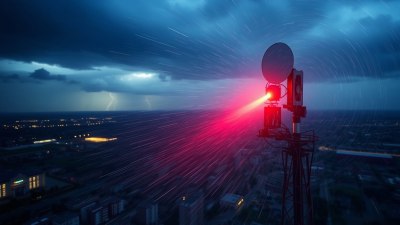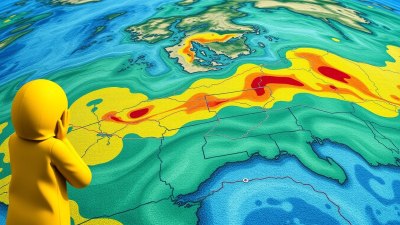When People Avoid Eye Contact Like It’s a Snow Squall
Explore why some people avoid eye contact intensely, like a snow squall, and what it reveals about communication and social behavior.

Imagine walking through a blizzard where visibility drops to nearly zero, the world around you becoming a vague, swirling mass of white. This visual chaos explains the metaphor behind people avoiding eye contact 'like it’s a snow squall.' Just as snow impairs vision and creates discomfort, some individuals dodge eye contact with similar urgency and evasiveness. But why do people sometimes act as if making eye contact were as daunting as entering a fierce snowstorm? The reasons span psychological, cultural, and situational factors that shape human interaction.
The Fundamental Role of Eye Contact in Communication
Eye contact serves as a primary channel of nonverbal communication. It conveys attention, interest, confidence, and emotional states. When two people look into each other’s eyes, they engage in a powerful exchange that establishes a social connection. Humans are wired to detect and respond to gaze direction—this ability helps regulate social behavior, understand intentions, and foster empathy.
From infancy, eye contact marks an essential developmental milestone. Babies stare into caregiver eyes to build attachment and recognize emotional cues. As we mature, sustained eye contact helps regulate conversations, signal engagement, and indicate trustworthiness. The absence or avoidance of eye contact disrupts this unspoken dialogue.
When Eye Contact Evokes Discomfort
Despite its importance, many people find eye contact uncomfortable or threatening. Various psychological mechanisms can trigger avoidance behaviors. For some, prolonged gaze feels invasive, exposing vulnerabilities or eliciting anxiety. In social anxiety disorder, individuals may avoid eye contact because it intensifies fears of judgment, scrutiny, or rejection.
Eye contact can create an intense sense of exposure. The eyes reveal emotions, thoughts, and reactions that people might not want to share openly. Avoiding eye contact functions as a protective strategy to shield oneself from perceived surveillance or emotional intrusion.
Social Anxiety and the Snow Squall Effect
Individuals with social anxiety often describe situations requiring eye contact as overwhelming storms. Their discomfort is not merely shyness but a profound fear of negative evaluation. When entering a social setting, they may feel surrounded by figurative blowing snowflakes -judgments, expectations, and criticisms- that impair their ability to meet others’ gaze.
This experience is akin to the metaphorical snow squall: a sudden, blinding condition that makes direct visual connection nearly impossible. Avoiding eye contact then becomes a defense against emotional overload. Often, the more one tries to force eye contact, the stronger the urge to look away grows, deepening the cycle.
Cultural Variations in Eye Contact Norms
Not all cultures interpret eye contact the same way. In some societies, particularly Western cultures, sustained eye contact is associated with honesty, confidence, and respect. In contrast, many Asian, African, and Indigenous cultures treat prolonged eye contact as a sign of challenge, disrespect, or aggression.
In these cultural contexts, avoiding eye contact parallels navigating through a dangerous snow squall—it’s a conscious maneuver to maintain harmony and show deference. Misunderstanding these differences can lead to misjudgments about sincerity or social awkwardness. What looks like avoidance might be deep respect rather than discomfort.
The Psychology Behind Avoiding Eye Contact
Eye contact avoidance also relates to broader psychological defense mechanisms. For example, people with low self-esteem may avert their gaze to escape feelings of inferiority or borderline self-worth. Similarly, those with trauma histories may find direct gaze triggering, as it reminds them of past abuse or intimidation.
During conversations involving difficult topics such as conflict, shame, or guilt, people might instinctively dodge eye contact to manage emotional escalation. The human nervous system naturally seeks to minimize threats; avoiding gaze can serve as a nonverbal sign that one is not seeking confrontation.
Developmental and Neurodivergent Factors
Children on the autism spectrum often avoid eye contact, which can be mistaken as disinterest or rudeness. Neurodivergent individuals process sensory information differently; eye contact might be overwhelmingly intense, akin to entering a visual snowstorm. Sensory overload leads to avoidance to maintain emotional equilibrium.
Developmental disorders and neurological differences—such as anxiety disorders, ADHD, or PTSD—also shape the way people experience and respond to eye contact demands. For these individuals, personal comfort zones regarding gaze are not fixed but vary based on context and internal state.
Situational Influences on Eye Contact Avoidance
Context matters greatly in whether people avoid eye contact. In professional settings, some may intentionally limit eye contact to project neutrality or avoid appearing overly aggressive. Conversely, in unfamiliar social environments, the innate uncertainty can trigger heightened gaze avoidance.
Even temporary states like fatigue, stress, or distraction reduce one’s capacity to maintain eye contact. People might find prolonged gaze draining when they feel overwhelmed. The visual world momentarily becomes a snow squall, and retreating gaze brings respite.
Consequences of Avoiding Eye Contact
While avoidance can serve protective or cultural purposes, persistent lack of eye contact often disrupts communication. It may cause misunderstandings, make conversational partners feel ignored or distrusted, and hinder relationship building. Trust and empathy rely on shared visual engagement.
In professional fields like counseling, sales, or leadership, failing to establish appropriate eye contact can undermine effectiveness. Recipients may perceive avoidance as aloofness, dishonesty, or disengagement. Understanding the underlying reasons for avoidance helps mitigate these negative effects.
How to Navigate Eye Contact Avoidance
Recognizing eye contact avoidance as a complex behavior is the first step toward respectful interpersonal interactions. If you notice someone shifting their gaze as if shielding themselves from a snow squall, consider their perspective rather than judging.
In dialogue, gently allowing the person to set comfort levels helps. Employ indirect gaze techniques—looking near the eyes or occasionally meeting gaze—can provide connection without pressure. For those who avoid eye contact due to anxiety, gradual exposure with supportive encouragement can ease discomfort.
Strategies to Improve Eye Contact Comfort
Individuals who want to become more comfortable with eye contact can practice specific techniques. Mindfulness exercises help increase awareness of internal reactions to gaze. Role-playing social scenarios provides a safe environment to build confidence.
Breathing techniques calm the nervous system during interactions. Gradual increments in sustained eye contact, paired with positive reinforcement, reduce the metaphorical intensity of the snow squall. Therapy and counseling can also address deeper psychological barriers.
Eye Contact in the Digital Age
The rise of virtual communication influences eye contact dynamics. Video calls occasionally create the illusion of eye contact, but actual gaze alignment is challenging. This can either relieve or exacerbate discomfort depending on individual preferences.
In some ways, avoiding direct gaze online is easier, as cameras don’t fully replicate in-person eye contact intensity. Yet, reduced visual cues impact communication quality, emphasizing the need to find alternative ways to convey attention and empathy.
Interpreting Eye Contact in Diverse Interactions
Understanding that eye contact norms vary widely protects against false assumptions. People avoid gaze for vastly different reasons: nervousness, culture, neurodivergence, or situational factors. Approaching interactions with curiosity and openness fosters stronger connections.
Instead of perceiving avoidance as rejection, considering it a natural protective response invites patience. Just as one would respect someone’s need to seek shelter from a severe snowstorm, respecting gaze preferences builds trust and safety.
When Eye Contact Avoidance Masks Deeper Issues
Sometimes eye contact avoidance signals underlying difficulties such as depression, trauma, or social withdrawal. These conditions can make social engagement exhausting or frightening. Paying attention to consistent avoidance patterns helps identify when professional support may be needed.
Intervening with empathy rather than confrontation encourages individuals to feel seen without feeling exposed. It acknowledges the complexity behind a behavior often misunderstood as mere inattentiveness or rudeness.
Improving Social Bonds Beyond Eye Contact
While eye contact is powerful, social bonds are multifaceted. Tone of voice, facial expressions, body language, and verbal content all contribute. When eye contact is limited, focusing on these other channels can compensate.
Expressions like genuine smiles, nodding, and open posture signal engagement and warmth. Listening actively and responding with empathetic words strengthens connections regardless of gaze behavior.
Eye Contact in Leadership and Public Speaking
For leaders and public speakers, eye contact establishes authority and rapport. Mastering this skill requires balancing assertiveness with approachability. Learning to read audience gaze and adjust accordingly prevents overwhelming listeners.
Simple techniques such as scanning the room rather than fixing on individuals help maintain connection without creating discomfort. Awareness of cultural diversity in gaze norms further refines communicative effectiveness.
Training and Awareness for Professionals
Professionals in fields like education, healthcare, and customer service benefit from training on eye contact variation. Understanding when avoidance results from cultural values or anxiety fosters compassionate responses.
Developing skills to adapt to different comfort levels prevents miscommunication. Workshops and sensitivity training promote inclusive environments where eye contact differences are respected.
Embracing the Complexity of Eye Contact
Eye contact, despite being a simple gesture, is layered with meaning and nuance. Analogizing avoidance to a snow squall captures the intensity and urgency some feel when facing gaze. Recognizing this complexity enables more empathetic and effective social interactions.
No single explanation or approach fits all people or situations. Embracing differences rather than enforcing rigid norms encourages authentic connections. Letting go of judgment around eye contact invites deeper understanding and reduces social friction.
In sum, the act of avoiding eye contact often reflects a guard against overwhelming, confusing, or threatening social environments. Just as one would respect taking shelter during a snow squall, respecting individuals’ gaze patterns honors their needs for safety and comfort within human connection.











